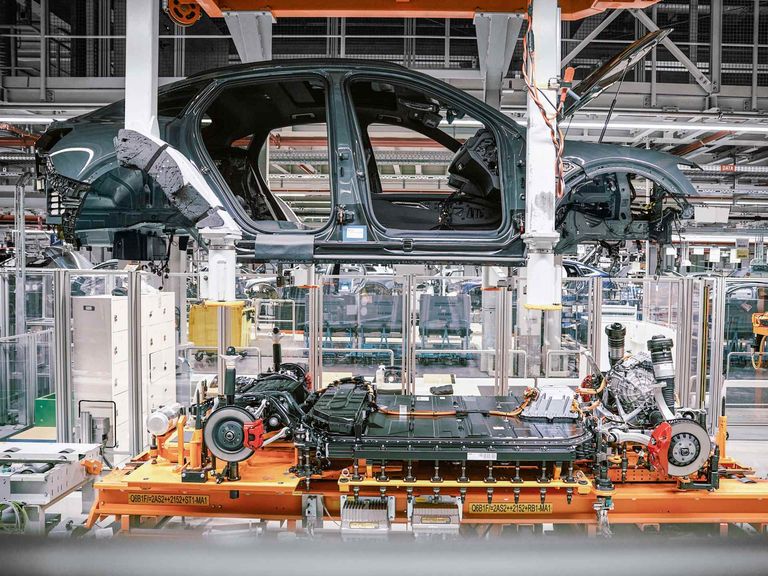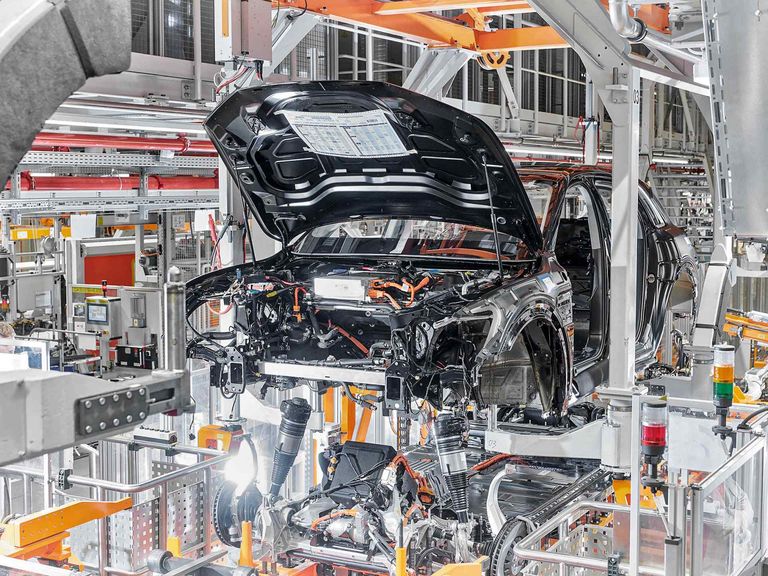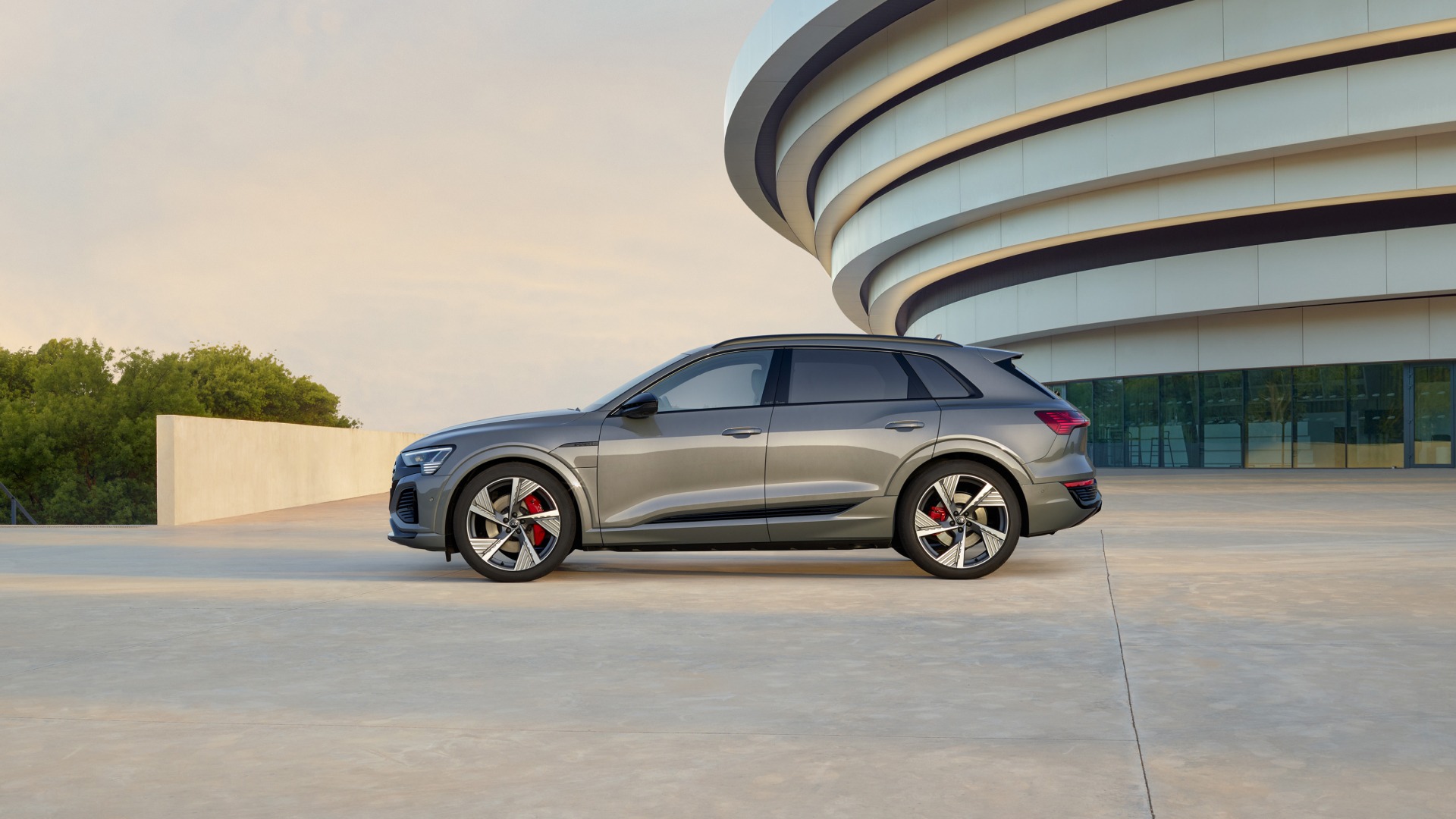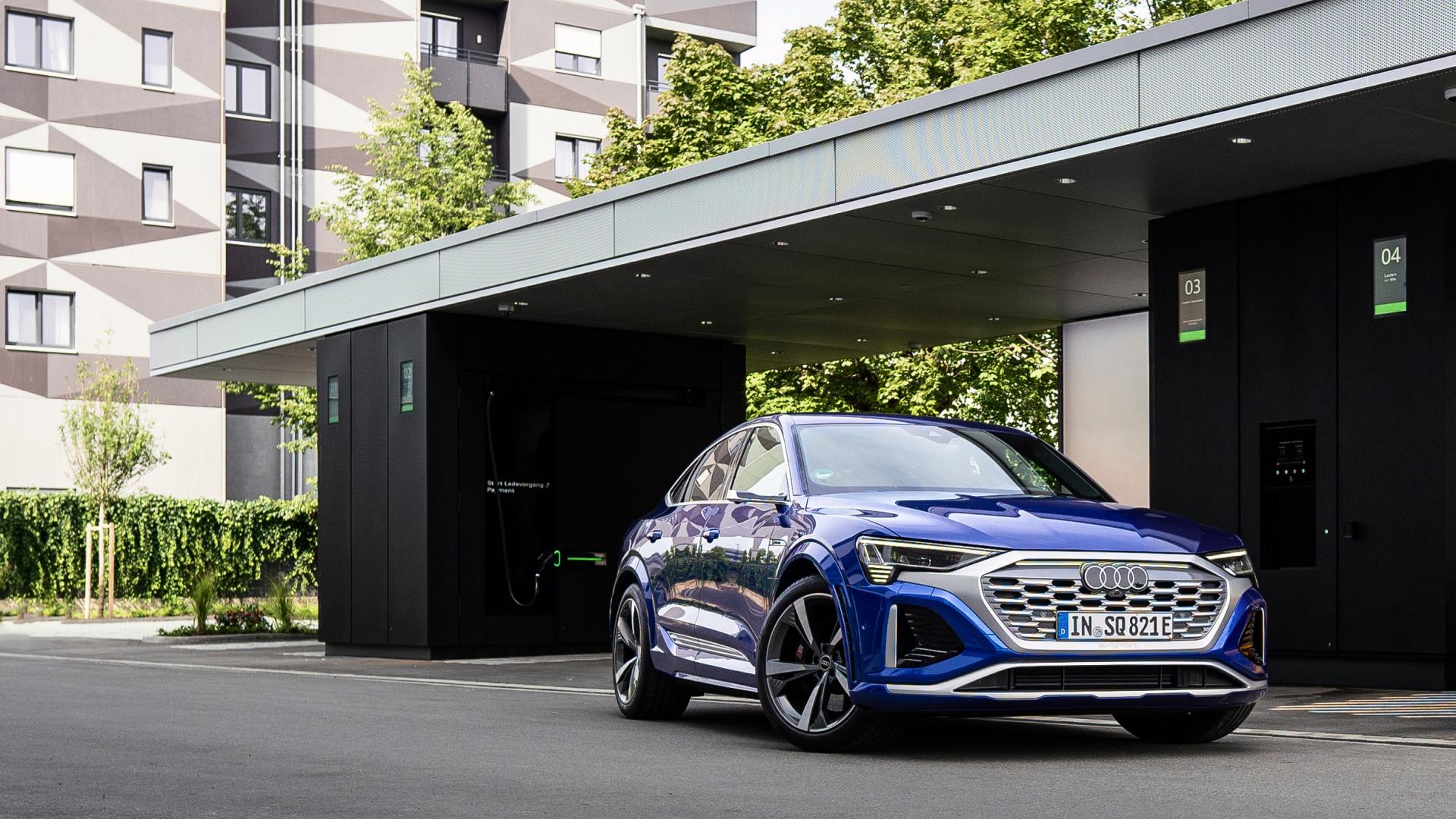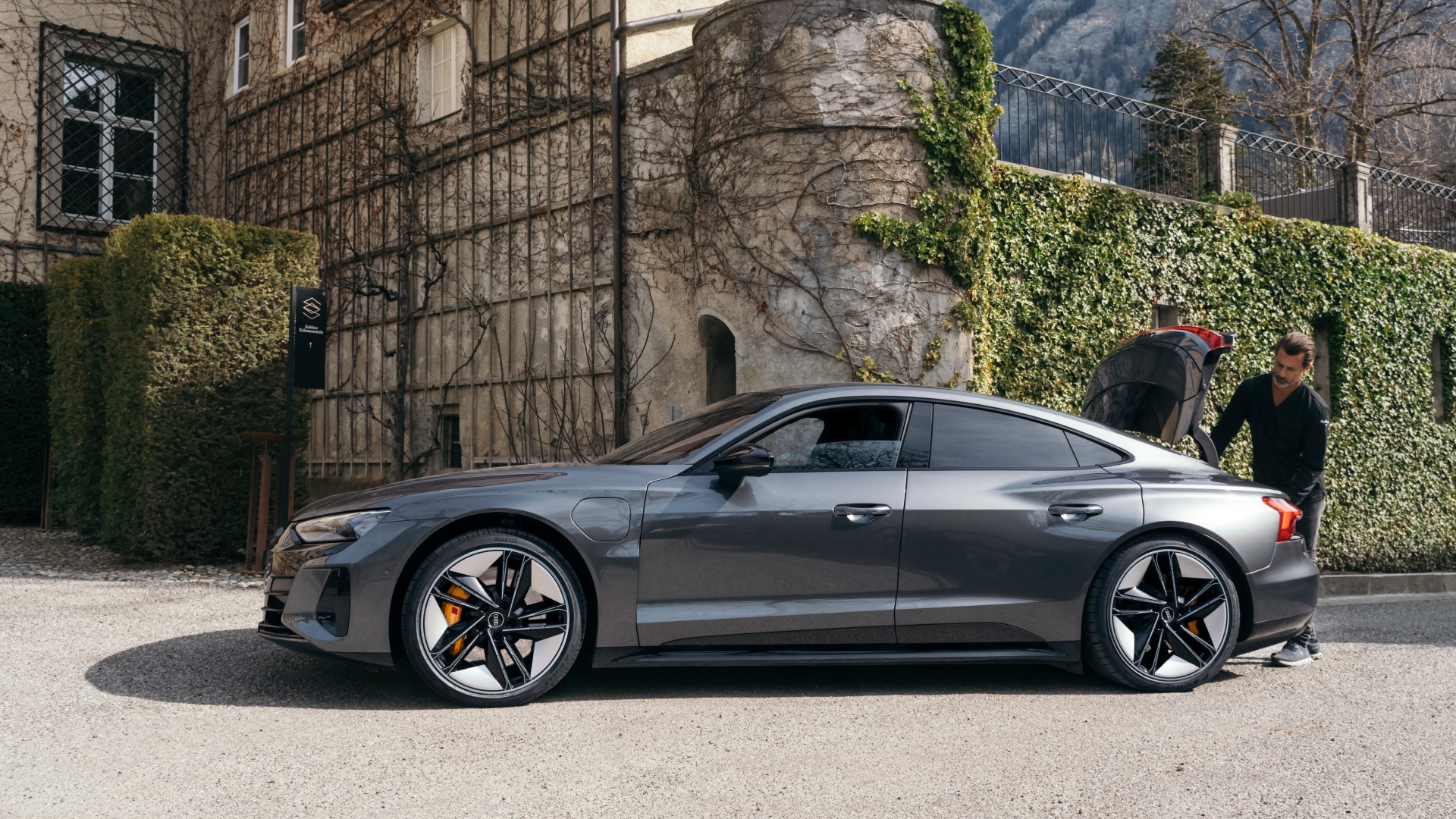Whether you are opting for a classic SUV or a coupe-like Sportback, the new, fully electric Audi Q8 e-tron impresses with its progressive design, long range, higher charging capacity, and exciting technology highlights.
All signs point towards the future
The Audi manufacturing plant in Brussels has geared its car production towards sustainability. An insight into modern entrepreneurship and into the production of the all-electric Audi Q8 e-tron.
Only consumption and emission values according to WLTP and not according to NEDC are available for this vehicle.
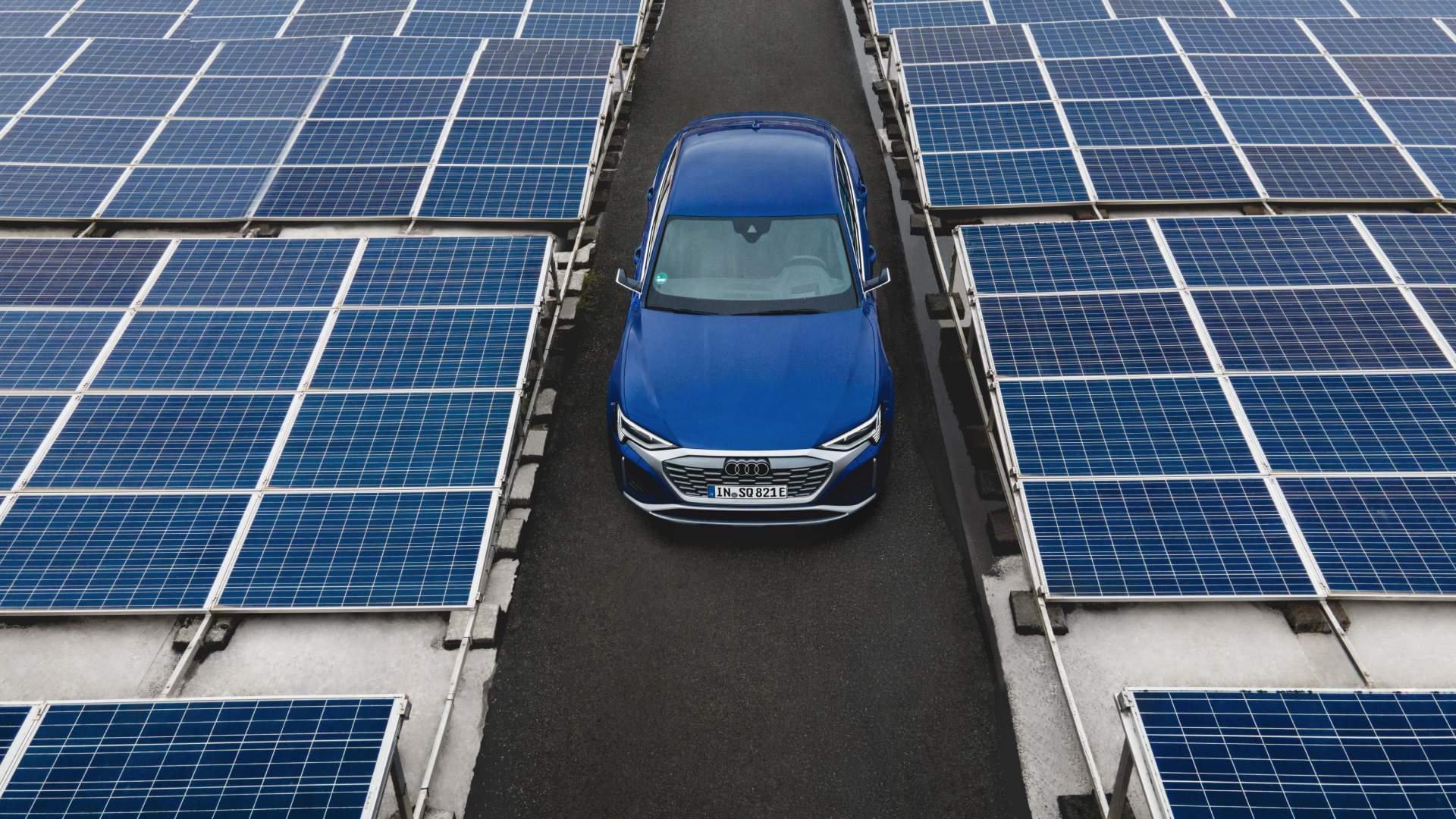
Several measures underline the approach to greater sustainability at the Audi manufacturing plant in Brussels. Among other things, the photovoltaic system with a size of approximately 107,000 m² supplies the plant with green electricity.
Several measures underline the approach to greater sustainability at the Audi manufacturing plant in Brussels. Among other things, the photovoltaic system with a size of approximately 107,000 m² supplies the plant with green electricity.
Located in the south-western part of Belgium’s Brussels-Capital Region is a centre for sustainable mobility: Audi Brussels. The manufacturing plant not only produces the new Audi Q8 e-tron. It is also particularly progressive in terms of decarbonisation in manufacturing: “We are the first Audi plant to achieve a carbon-neutral footprint during the production of our vehicles, which has also been certified since 2018,” explains Christian Stragier, Environmental Officer at Audi Brussels. This also makes the site the world’s first carbon-neutral large-scale production facility in the premium segment to be certified by independent experts.
This success was achieved through a package of measures. A lion’s share of the CO₂ savings (approx. 95 percent) is due to the switch to renewable energies. For example, the plant, which covers almost 54 hectares, uses only Belgian green electricity and biogas purchased from all over Europe. The site also produces its own energy. Here, one of the region’s largest photovoltaic systems covering an area of around 107,000 square meters generates around 9,000 megawatt hours of electricity per year.
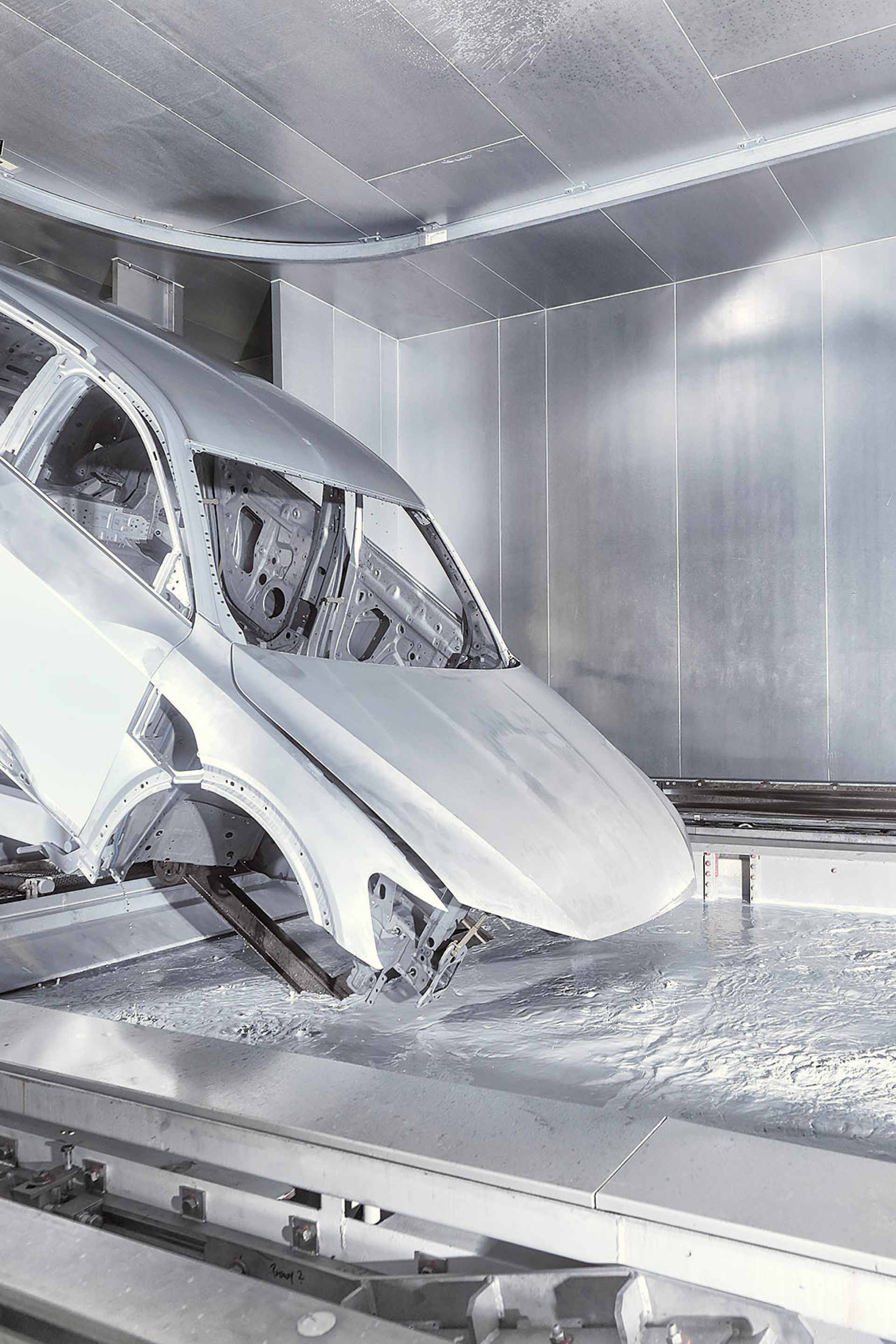
In order to save fresh water, for example in the paint shop, grey water will be used in production from the end of 2023, which will be supplied from the neighbouring wastewater treatment plant.
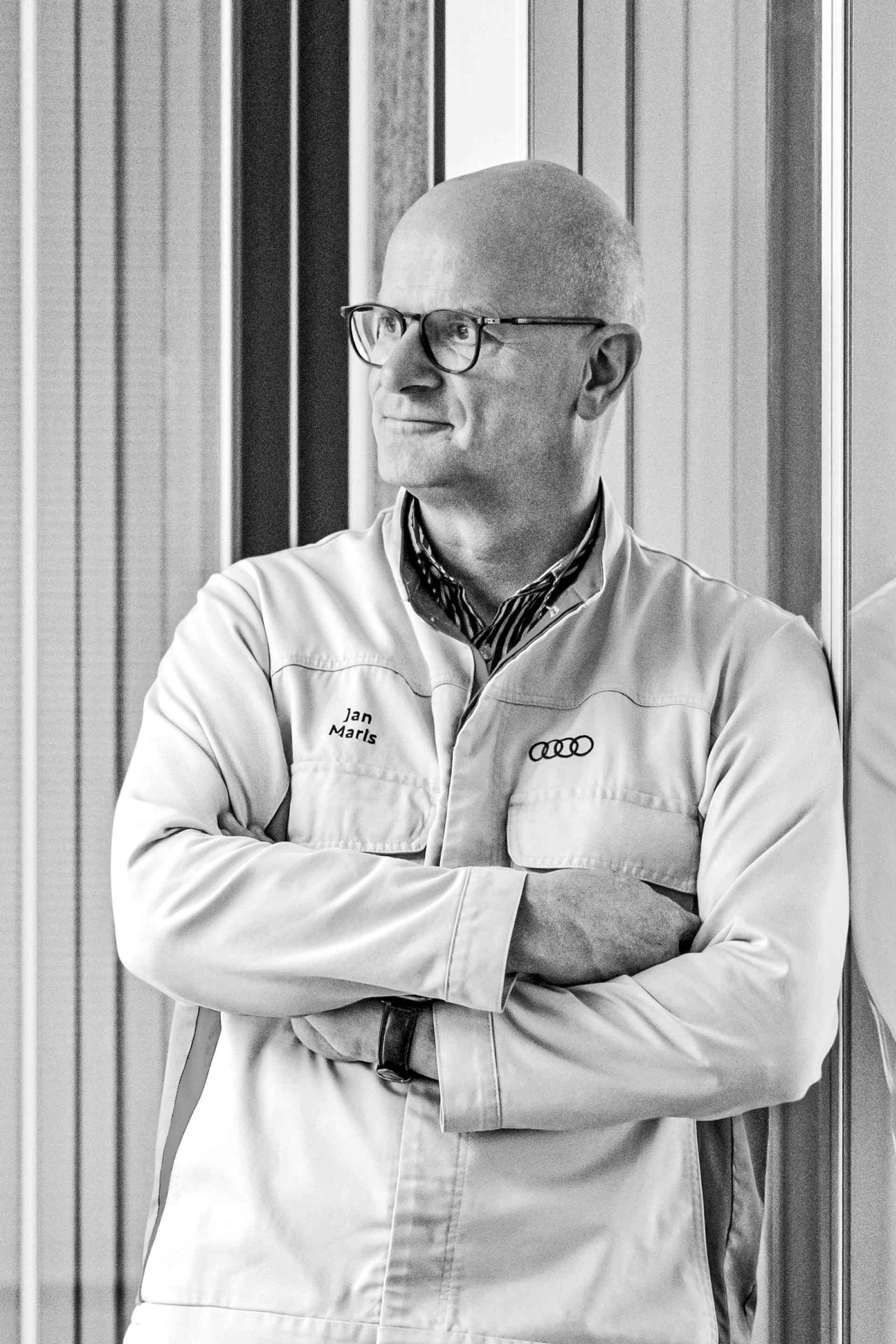
Jan Maris, Production Manager at Audi Brussels, witnessed and helped shape the switch from combustion vehicles to the e-tron models. For him, it’s also a question of attitude.
In order to save fresh water, for example in the paint shop, grey water will be used in production from the end of 2023, which will be supplied from the neighbouring wastewater treatment plant.
Jan Maris, Production Manager at Audi Brussels, witnessed and helped shape the switch from combustion vehicles to the e-tron models. For him, it’s also a question of attitude.
“Our philosophy: A premium vehicle can only be created in a premium environment.”
Jan Maris
What’s equally important: saving energy. “It mainly requires a change in attitude,” says Jan Maris, Production Manager at Audi Brussels. His team in body shop, paint shop and assembly faced many challenges during the switch to e-mobility. Before there was the large, electric Audi e-tron, they built the comparatively small Audi A1 equipped with a combustion engine in Brussels until 2018. So, it was not only the drive technology and various work processes that changed, but also the size and weight of the vehicles. The facilities had to be enlarged and converted accordingly. And then, battery production, a completely new area for Audi, moved onto the plant site. The conversion phase, which was carried out without interrupting production, took two years, during which large parts of the workforce were given further training or were retrained.
At the same time, they assessed the production processes for their future potential, optimising them to enable greater sustainability. For example, the hall temperature was reduced from 22 to 18 degrees Celsius, and the lights in the halls are switched off during breaks and 20 percent dimmed during operation. Many fully automated systems now operate in the dark, while others have been replaced by more resource-efficient alternatives. “For us, this is a philosophy: A premium vehicle can only be created in a premium environment,” Maris points out. And premium, as Audi agrees, can no longer be possible without striving for sustainability, especially in electric vehicles.
Audi Brussels has thus established a role model function when it comes to decarbonisation, from which other plants in the Group can also draw inspiration and learn, reveals Christian Stragier. After all, by 2025 all Audi sites are to have a carbon-neutral production; this is one of the main goals of Audi’s “Mission:Zero” environmental programme.
But even in Brussels, the mission isn’t completed yet. The site is continuously looking for ideas to save an additional three percent of energy per year. Time and again, the manufacturing plant achieves new milestones in the process. From the end of 2023, for example, the neighbouring wastewater treatment plant will process the wastewater from Audi Brussels into so-called grey water, which will then be reused in production. This will save a good 100,000 cubic meters of drinking water per year. With an eye to the future, Environmental Officer Stragier has put the search for alternative energy sources to replace gas at the top of his agenda.
“We are the first Audi plant to achieve a carbon-neutral footprint during the production of our vehicles.”
Christian Stragier

As Environmental Officer, Christian Stragier at Audi Brussels has his eye on measures to decarbonise production.

The nearly 54-hectare plant uses only green electricity and biogas as energy sources. But the site also produces its own energy.
As Environmental Officer, Christian Stragier at Audi Brussels has his eye on measures to decarbonise production.
The nearly 54-hectare plant uses only green electricity and biogas as energy sources. But the site also produces its own energy.
According to Jan Maris, innovations such as artificial intelligence could leverage even more potential in production in the future. Examples already exist, such as FinRob. The collaborative robot uses a sensor to detect whether enough adhesive has been used between the folds of a car door – in the past, the doors needed to be split open at random for that purpose. “We now save many tons of CO₂ because we don’t have to scrap the materials.” In addition, thinking beyond the confines of the site is also necessary to ensure that a car like the Audi Q8 e-tron can ultimately be built in a sustainable way. For example, Audi requires suppliers to produce battery cells exclusively with energy from renewable sources. And parts produced at other locations that are needed to complete the Audi Q8 e-tron, such as battery modules, are not transported by lorry, but are delivered to the Brussels site by zero-emissions freight train from the Audi plant in Györ, Hungary. These are all measures to save CO₂.
Currently, around five percent of emissions at the Brussels plant are offset by environmental projects in order to be carbon-neutral, as they cannot yet be avoided in any other way – this includes emissions caused by production-related business trips, for example. For Stragier, the goal is clear: keeping up the good work so that the need for offsets can be further reduced. “A zero-impact factory, an energy-autonomous company with closed loops, that would be the vision.”

The Audi Q8 e-tron has been rolling off the production line in Brussels since December 14, 2022, replacing its predecessor, the Audi e-tron, which had previously been manufactured in Belgium since 2018.
The Audi Q8 e-tron has been rolling off the production line in Brussels since December 14, 2022, replacing its predecessor, the Audi e-tron, which had previously been manufactured in Belgium since 2018.
